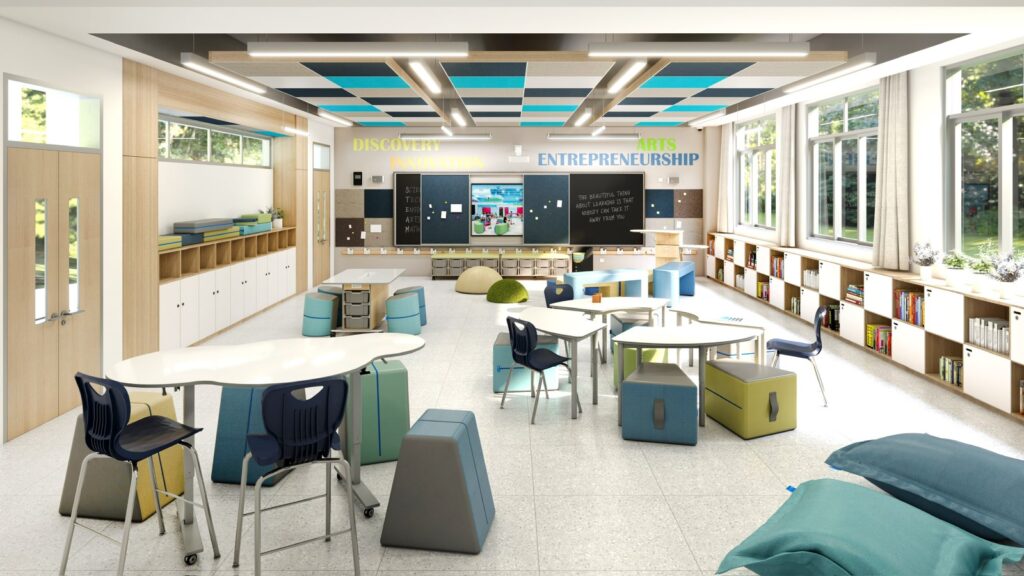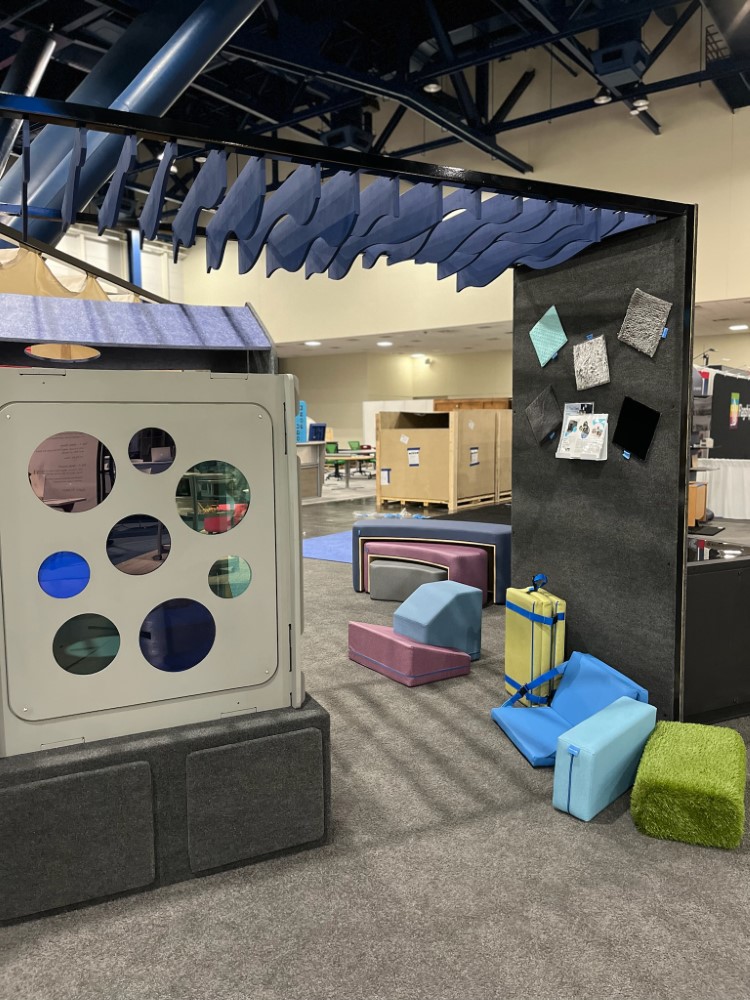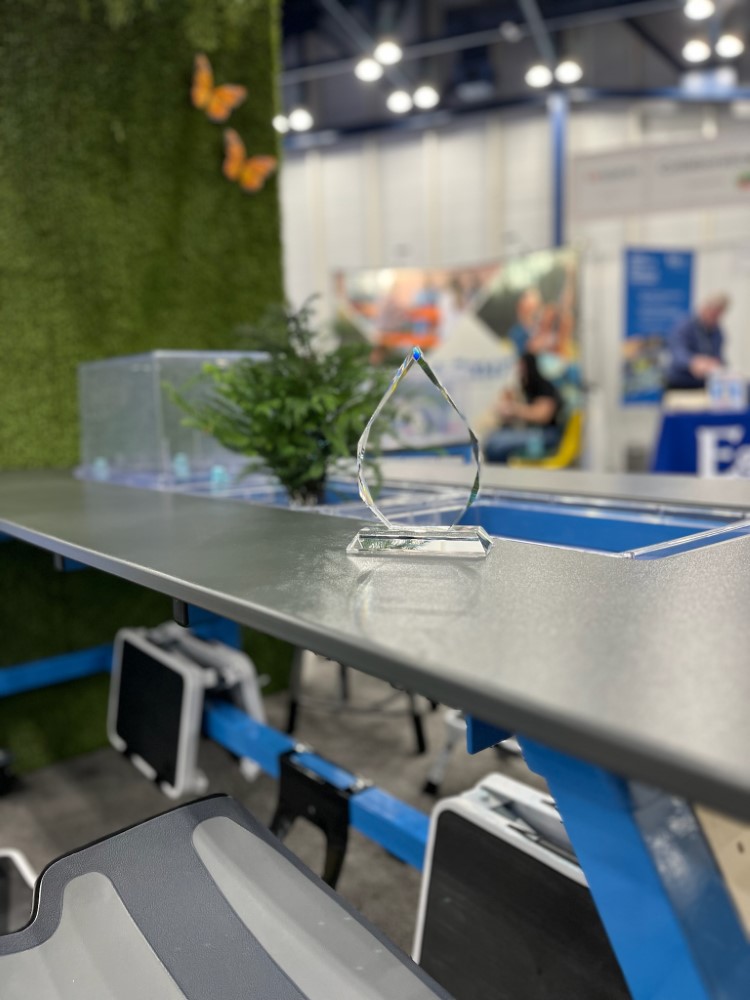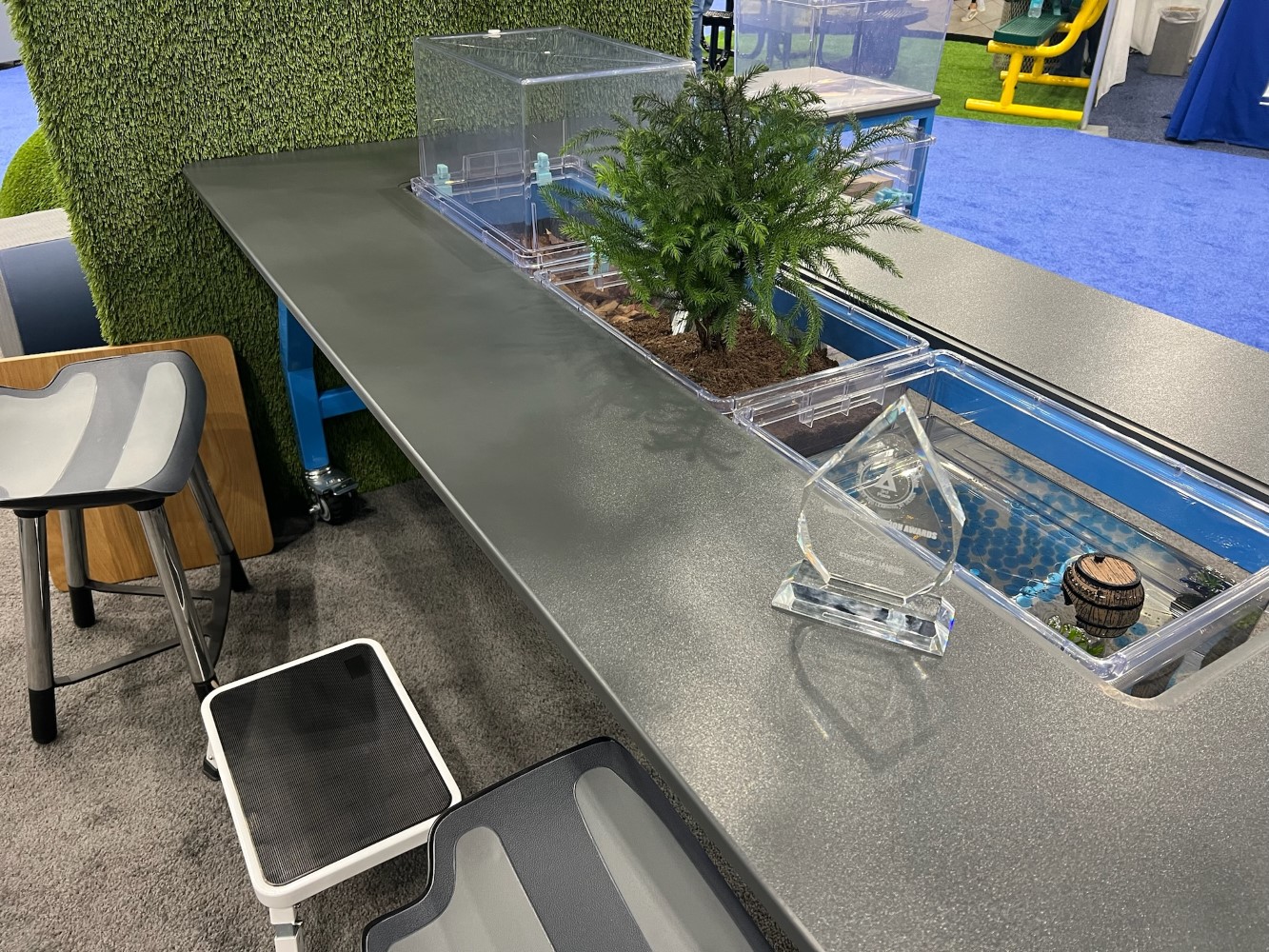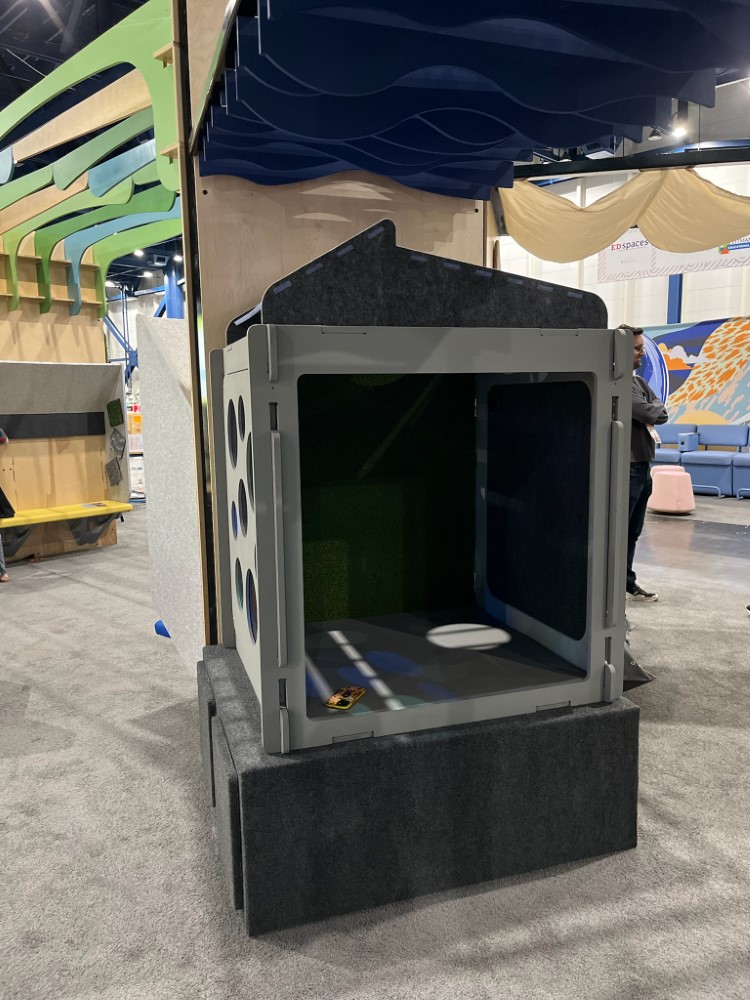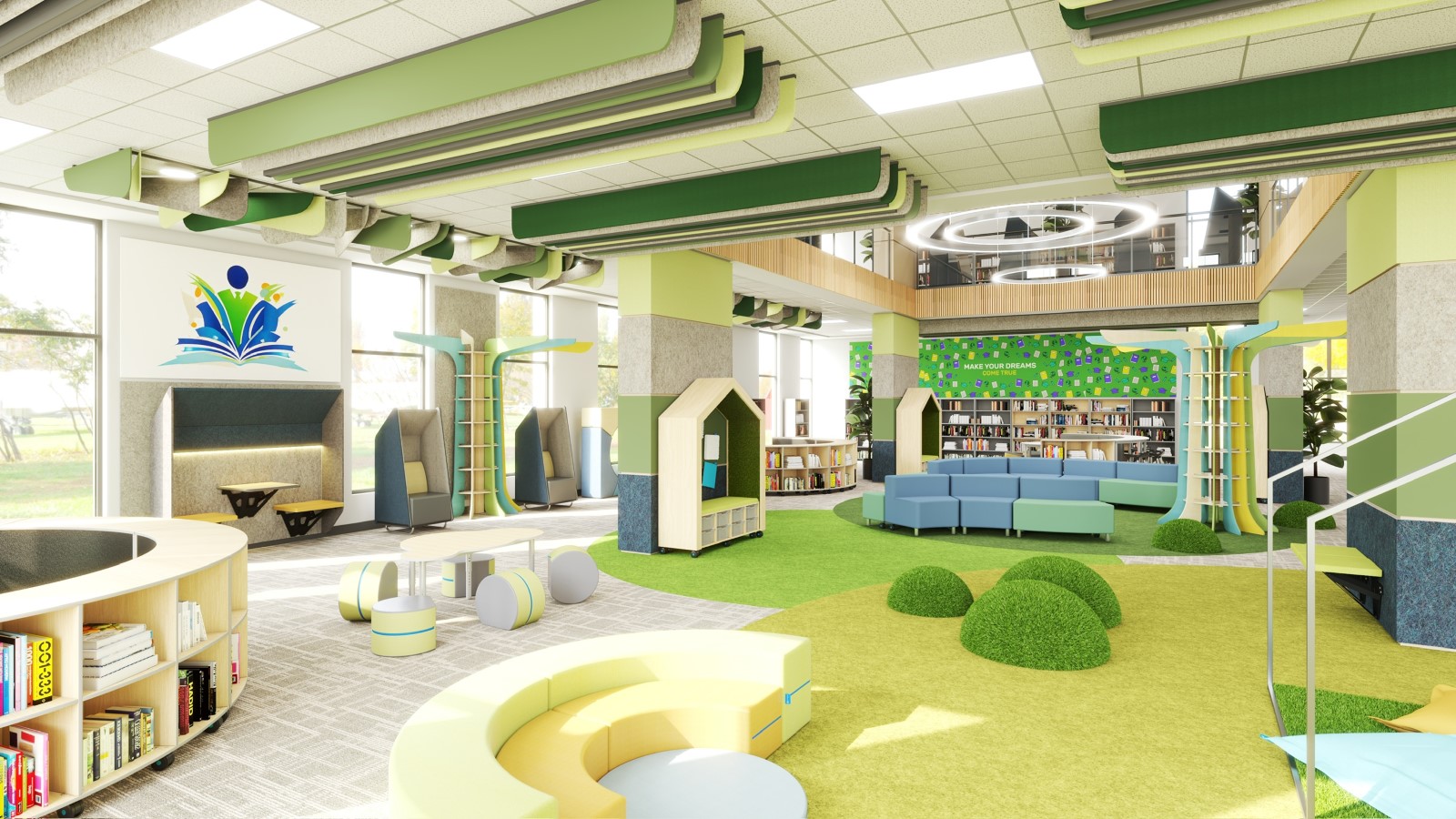A collaboration from the UFG Manufacturing Team: Director of Education, Hannah Tejeda, BA, M.ed; Engineer, Arun Surujpaul and A&D Representative, Adriana Mezquitti
“Education is not preparation for life; education is life itself.” – John Dewey
Viewing educational space as an extension of a greater ecosystem allows for intentional preparation and practice. Throughout preparation processes, educational leadership and instructional staff have numerous components to examine:
- Curriculum
- Instructional Methods
- Professional Development
- Community Culture
- Gradebook Norms / Data Collection
- Behavioral Intervention
- Academic Growth Processes
- Family/Community Involvement
What rarely makes this list is consideration of physical space. 90% of the time, facilitators are left with several days to ‘make the magic happen’. Chalkbeat highlights a staggering statistic about NYC educators:
“NYC Teachers Return to School 2 Days Before Kids. Many Want More Time”
“It’s not enough time, many educators say, especially since a large chunk of those two days are spent in professional development and learning about any new Education Department policies. (Schools, for instance, are gearing up for new literacy programs and new math mandates.) What ends up happening as a result: A lot of teachers come back earlier to set up their classrooms — even though they typically don’t get paid for it.”
Viewing environmental set up as a reflection of real-life, here are several tips in getting started:
- Having a basic ‘starting layout’ for Day 1 and incorporating learning space design as a community building activity.
- Create problem-solving based activities to encourage spatial awareness and overall use (Guided Discoveries, Gallery Walks, Notice/Wonder, Spatial Scoring/Rubrics etc.)
- Include furniture which offers ease of mobility – Mobility in such a way that kids are assisting with the heavy lifting.
- Cover the basics and co-transform the rest! Include learners in environmental systems like: home base, material organization, transitions, smart spots etc.
Knowing the facts about facilitators’ schedules and the small amount of time allotted for space set-up… the educational manufacturing industry must do the following:
- Seek to understand the true needs of all individuals within a learning space.
- Observe the timeline in which facilitators work (including BOY set-up, transitions, curricular units, testing seasons etc.).
- Work to remediate stressors through design and innovation.
- Thoroughly test products for practicality and functionality purposes.
- Welcome and receive feedback from educational organizations.
- Express support in project management and overall accessibility of solutions.
Compiled of a team of architects, designers, engineers, sourcing specialists, certified educational specialists, marketing managers and more – NorvaNivel utilizes these criteria within a detailed design scoring procedure. Ensuring all solutions encompass an attitude of seeking to understand, observation, remediation, testing, feedback, and expression.
Welcome to – A Fresh Perspective: A 16-post series navigating the ins and outs of unwilted pedagogical practices, new designs, educational spotlights, and process details – all of which work to improve learning experiences for both learners and facilitators.
The Design Process
At the heart of design processes lies the collaborative spirit of brainstorming; where personnel come together and explore the unique needs of people-centered environments. This journey is divided into three essential components:
- Educational Justification: We begin by ensuring our designs are rooted in pedagogical principles;
- Engineering Considerations: We delve into criteria, addressing practical aspects of our creations.
- Design Components: We focus on the roadmap where creativity meets functionality.
Together, these elements act as a guide in crafting solutions that truly support educators and learners alike, fostering fully needs-based, evidence-driven learning spaces.
Don’t Dismiss the Finishes!
Visionary design is the cornerstone of educational philosophy and must be approached with a strong sense of care, pride, and commitment. From inception, an in-depth exploration of materials and colors takes place; Ensuring each piece is not only highly unique but purposefully innovative.
The principles of color theory, color psychology and texture warrant an elevated attention to detail. All of which are mindfully integrated into the physical environment. Diverse needs of facilitators and learners are recognized – from the smallest explorers to the biggest. Every element of the creative design process is meticulously curated to foster curiosity and inventiveness. Constructing people-oriented spaces must reflect a dedication to providing experiential learning for everyone within the learning community.
Consideration of Higher Ed
Recognizing the vast ever-changing realm of higher education, it is imperative to prioritize the overall design and purpose of a space. This involves meticulous planning involving shapes and materials that cater to an expected sophistication and incorporation of whimsical elements. This enhances an inclusive atmosphere and considers communication milestones such as pretend play and growing flexible.
Excitement should exist when discussing the versatile capabilities of each piece. Allowing for the blend of practicality and expression. Additionally, the integration of power (AC/DC) elements can facilitate a more connected and technologically adept learning experience.
The Engineering Process
Engineering is where imagination meets functionality. Where commitment to safety and inclusivity takes center stage.
When designing products like SereniCube and the award-winning Bio Table, consideration of every detail exists to ensure each piece can stand up to the lively, hands-on world of education. This means prioritizing child safety through designs that eliminate potential –
- Pinch points
- Sharp edges
- Tipping hazards.
Every curve, corner, and component are intentionally crafted to produce furniture that’s as safe as it is engaging.
Another critical consideration is ensuring that products are easy to handle. For example, reducing the weight of furniture allows students to actively engage in configuring their own learning environments without struggling or risking injury. By using high-quality S95 foam in soft seating, a balance of comfort, durability, and lightness is achieved. For larger pieces, structures must remain stable and mobile without compromising their unique design and adaptability.
Product Testing
Testing is another cornerstone of the engineering process. Where solutions undergo rigorous evaluations to meet both BIFMA industry standards and internal high expectations. How is this done?
- Assessing the stability of upholstered seating
- Stress-testing joints and finishes
- Analyzing the durability of materials
- Focus groups involving both learners and facilitators
- Discussions with occupational and physical therapists
- Collaboration with our vendors
Engineering is essential in the product actualization process. Through this collaborative effort, every product reflects the premium quality that educators and learners deserve.
Product Sneak Peek
Of course, safety and functionality are just the beginning—the engineering team is also tasked with fashioning furniture that INSPIRES. PIaces like the SereniCube are practical AND innovative. A solution for inclusivity, providing calm, adaptable spaces for learners of all ages.
The BioTable, with its focus on nature-based exploration, exemplifies how thoughtful engineering can elevate both utility and aesthetic appeal. It is a step toward challenging the traditional classroom and reimagining what’s possible in educational spaces.
Thank you!
From everyone at UFG, we want to take a moment to say Thank You for reading. We are dedicated to providing the highest quality, research-driven solutions that are truly deserved.
This series will serve as a platform of information and connection. It is our belief that relationships extend beyond business transactions. Have a question or topic to cover?? Let us know!
Environmental transformation is a collaborative effort aimed at thrusting educational growth and innovation forward. Thank you for believing in the mission. We eagerly anticipate more years of fruitful partnership and shared successes.

